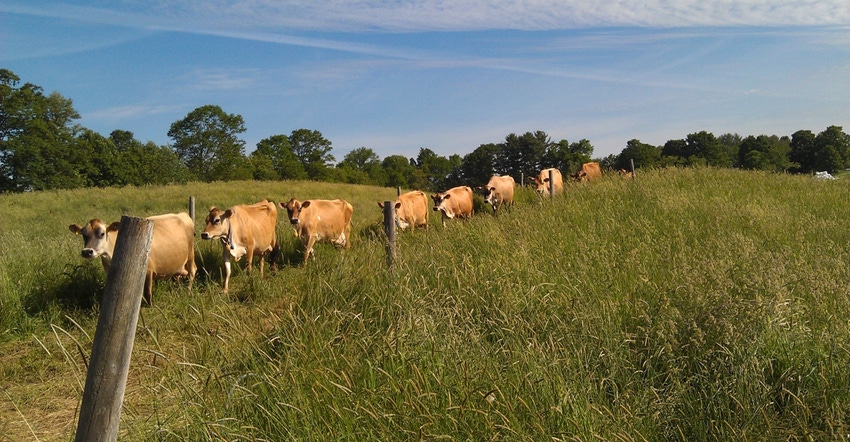
A recent dairy summit in Albany, N.Y., organized by the Agri-Mark dairy cooperative drew more than 300 people to talk about the current state of dairy farming in the U.S.
A website, dairyproposals2018.com, has been developed for people to submit their proposals to fix the current dairy pricing system. So far, 21 proposals have been submitted, ranging from a Canadian-style quota system to giving farmers more direct control of their pricing.
American Agriculturist read the proposals. Here are some of the highlights taken directly from the website:
1. Create a national dairy cooperative collaborative to better regulate milk production.
Nathaniel Severy, Severy Farm in Vermont, says: "My idea is that we tackle this problem within our own industry with the tools we already have and can implement almost immediately."
Under the plan, co-ops would adhere to regional production "caps" based on regional supply needs. Each co-op would then sign a legal document agreeing that their farmers would only produce the capped quantity of milk or be at risk of a lawsuit for breach of contract. The co-ops would then go back to their respective farmers and implement the production limit as they see fit, and they could request a contract amendment if they exceed the production cap.
2. Implement a 5% to 10% surcharge on all retail dairy products that would go directly to farmers.
James J. Larkin of Larkin Farm LLC in Sheffield, Mass., also suggests a $20-per-cwt price floor so long as farmers stay within 5% of their FSA base and don’t overproduce. He suggests farmers pay a $10-per-cwt fee if they overproduce.
3. Set a year-over-year growth rate cap and make farmers pay a "market access fee" for exceeding the cap.
This proposal, submitted by Kara O'Connor on behalf of the Wisconsin Farmers Union, was considered in the 2014 Farm Bill but was not approved. Under the plan, USDA would announce a year-over-year growth cap each quarter — normally 3% — where producers could expand their production without paying a market access fee. If they exceed the cap, the producer would pay a fee — between 0.03 and 0.50 cents per cwt — that would then be paid to other dairy farmers who stay within their production cap.
The concept is to allow larger dairies with available capital to get bigger while rewarding other dairies for staying within their production cap.
4. Set an immediate $20-per-cwt price floor and implement supply management.
Submitted by Norry Diaz on behalf of the National Family Farm Coalition, the proposal also calls for USDA to buy milk products to help stabilize the market; a moratorium on Environmental Quality Incentives Program funding, and direct and guaranteed loans to concentrated animal feeding operations; and congressional hearings on the national milk pricing formula.
5. Establish a national dairy inventory management program and quotas based on regional needs.
Mark McAfee, a California farmer, suggests issuing regional quotas for milk production at a predetermined price.
Prices would be determined by farmers in each region based on cost of production and other indices.
Any extra milk produced would be exported at a reduced price. McAfee believes this would incentivize farmers to match their production quota and not overproduce.
New quotas would only be issued regional boards based on demand increases. Enrollment is mandatory of all farmers, including organic dairy farmers.
About the Author(s)
You May Also Like






